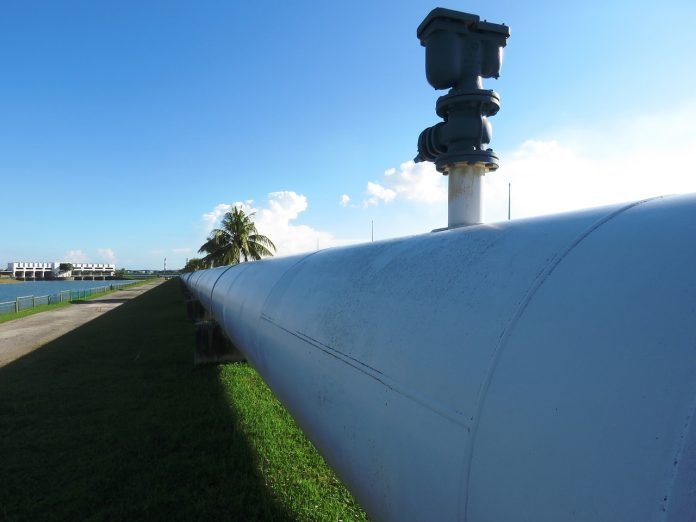Last Updated on April 1, 2023 by
In the world of pipeline industries, having the right equipment is crucial to ensuring the efficiency and safety of operations. There are essential pieces of equipment that serve as the backbone of these industries.
Table of Contents
The pipe layers
The fascinating world of pipeline industries showcases a plethora of cutting-edge technologies, with a prime example being the remarkable pipe layers. These specifically designed machines serve an incredibly important purpose in the process of accurately positioning pipes into trenches. As the backbone of infrastructure projects like water, gas, and oil distribution, pipe layers have swiftly become indispensable in ensuring efficiency, safety, and precision.
Their sophisticated engineering and technology enable operators to lay miles of pipes seamlessly, thereby optimizing timeliness and reducing the likelihood of human error. As a testimony to the rapid advancement of this industry, pipe layers have evolved to become a symbol of progress, enhancing our ability to execute complex infrastructure endeavors with unmatched accuracy and effectiveness.
Welding machines
The marvel of pipeline industries truly lies in their core strength – the welding machines. These innovative machines not only allow pipes to be joined seamlessly but also create a robust infrastructure that becomes virtually unyielding. It is fascinating to consider the crucial role these machines play in various applications across diverse sectors, such as oil and gas, water supply systems, and even heating and cooling systems for buildings.
Their precise and efficient operations enable the creation of sturdy networks of pipelines, ensuring that valuable resources reach their intended destinations without compromise. Undoubtedly, welding machines have revolutionized the way we build and maintain our infrastructure, contributing significantly to the continuous progress of modern society.
Robots and remotely operated vehicles
The pipeline industry has been revolutionized by cutting-edge advancements in technology, with robots and remotely operated vehicles (ROVs) significantly contributing to the enhancement of operations, improving both efficiency and safety.
These remarkable innovations play an integral role in pipeline inspections and maintenance, enabling teams to proficiently assess and repair critical infrastructure components, even in hard-to-reach areas. By integrating the use of these agile and precise machines, the industry benefits from greater accuracy and reduced downtime while minimizing risk exposure for workers. Consequently, the incorporation of robotic systems and ROVs in the pipeline sector is not only driving progress but also shaping the future landscape of the industry.
Hydrostatic testing equipment
An indispensable instrument for assessing the integrity of pipelines, hydrostatic testing equipment plays a pivotal role in safeguarding against potential disasters. The hydrostatic test, which involves filling the pipeline with a liquid (typically water), pressurizing it to a predetermined level, and monitoring it for leaks and deformations, allows inspection teams to scrutinize the strength of the pipelines and identify weaknesses that may result in catastrophic incidents.
Preventive and proactive in its approach, hydrostatic testing equipment continuously helps pipeline industries maintain efficiency, minimize environmental impact, and protect communities surrounding their infrastructure. In an era where industries are increasingly being held responsible for their environmental footprint, investing in such advanced testing methods ensures a more sustainable and responsible future for all.
Protective equipment
Protective equipment such as helmets, gloves, and harnesses serve as indispensable tools in safeguarding those who work on the front lines of our energy infrastructure. Helmets protect against head injuries during labor, while gloves provide the necessary grip and shield hands from sharp, hot, or cold objects.
Harnesses, too, contribute significantly to worker safety, as they secure individuals in elevated or precarious positions, preventing falls and other accidents. Ultimately, investing in reliable protective equipment is vital in safeguarding the valuable workforce within the pipeline industry, creating an environment where accidents are minimized, and the supply of critical resources continues unabated.
Powerful excavation and trenching equipment
The pipeline industry relies heavily on the utilization of powerful excavation and trenching equipment to achieve successful project outcomes. Among the various tools employed for this purpose, mini excavators stand out as the ultimate champions in navigating through challenging terrain and ensuring the pipeline infrastructure maintains its optimal course. These compact machines, designed for efficiency and precision, are capable of breaking ground with impressive force, while their smaller size allows them to operate in tight spaces with ease.
Furthermore, mini excavators facilitate safer operations by reducing the risk of damage to surrounding structures, ultimately contributing to the overall success and sustainability of pipeline projects. An indispensable ally in the field, mini excavators have truly revolutionized the way excavation and trenching tasks are carried out in the pipeline industry.
Each of these components comes together to create a robust system that upholds the pipeline industries across the globe.
Apart from this, if you are interested to know more about Metal Components In Oil & Gas Industry then visit our Business category.


























